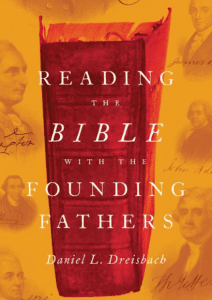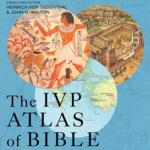On Sunday Scot put up a short post highlighting a shift at Bryan College tightening the “acceptable” ranges of interpretation of the Genesis account. While most of the commenters on the post mourned the change that sentiment is certainly not universal. As one of the commenters put it:
I am thankful that there are some Christians who believe the Word of God as it is written, without infusing men’s evolutionary ideas into the text. For thousands of years, Christians have understood what God meant by creating the world “in six days,” and I applaud Bryan for understanding how very important it is to look at the Biblical text itself, not men’s opinions. It is only when we start calling theories and suppositions “science” that the Christian community becomes confused. Some are even ashamed of the Genesis account.
The Lord God of the scriptures is a powerful Creator and does not need any defense from me; we must realize that His text is not up for our human interpretation. We will find out exactly how He created when we stand before Him one day, and until then– I believe exactly what He says in Genesis 1. I am thankful for Bryan standing on “the evening and the morning were the first day.”
His text is not up for our human interpretation? … Ah, well … but a text, any text, is nothing without interpretation. We interpret as we read the bible – constantly.
 And this leads right into the second chapter of Ronald E. Osborn’s new book Death Before the Fall: Biblical Literalism and the Problem of Animal Suffering entitled What is eating Biblical Literalists? Osborn comes from a background (Seventh Day Adventist) where young earth creationism is the dominant view. Flood geology began with the work of George McCready Price, a Seventh Day Adventist. According to the Wikipedia article on Price, his ideas were used heavily by Bryan in the Scopes trial. They also formed the groundwork for The Genesis Flood by Henry Morris and John Whitcomb. Because of this background Osborn takes a number of chapters to work through this issues of biblical literalism beginning with the issue of authority.
And this leads right into the second chapter of Ronald E. Osborn’s new book Death Before the Fall: Biblical Literalism and the Problem of Animal Suffering entitled What is eating Biblical Literalists? Osborn comes from a background (Seventh Day Adventist) where young earth creationism is the dominant view. Flood geology began with the work of George McCready Price, a Seventh Day Adventist. According to the Wikipedia article on Price, his ideas were used heavily by Bryan in the Scopes trial. They also formed the groundwork for The Genesis Flood by Henry Morris and John Whitcomb. Because of this background Osborn takes a number of chapters to work through this issues of biblical literalism beginning with the issue of authority.
Osborn begins the discussion of literalism and the interpretation of Genesis with a description of his view and approach:
My interpretation of Genesis … is strictly textual and in no sense dependent on modern scientific methods or historical-critical methods. At the same time, I am open to whatever genuine knowledge about physical realities and history can be gleaned from the weight of the scientific and historical evidence. I have tried to read Genesis literally in order to understand it theologically but without succumbing to wooden literalism, biblicism, or fundamentalism. I would happily describe myself as a literalist and a creationist in my thinking on Genesis, then, if others were to grant me the titles. I have done my best, in any case, to understand what Genesis is literally concerned with, and I believe that God is the Creator [of] the universe and the giver of life. (p. 39-40)
But this is not what most mean by either literalism or creationism as Osborn readily acknowledges. Yet it is important to start here. Most of us who find evolutionary creation (or theistic evolution) the best approach are not in any way denying the authority of Scripture. We do, however, take an approach that places the foundation of our faith not in the text of scripture but in the actions of God, most significantly the life, death, and resurrection of Jesus God’s Messiah. In biblical literalism the text of scripture is the foundation of faith and true knowledge.
Biblical literalism as a self-conscious epistemological stance … is an expression of the philosophical foundationalism and rationalism that underwrites the Enlightenment project and the modernist worldview. …[A]ll truth claims must be stacked one atop another like the bricks to a house, beginning from an indubitable “firm foundation.” This idea has roots stretching all the way back to Plato but took a new and greatly intensified hold upon Western thought around the middle of the seventeenth century largely as a result of the writings of René Descartes. (pp. 41-42)
And how many times have we heard the statement that if we can’t believe Genesis 1 or in Adam, or a flood that covered the highest mountain tops, we can’t believe in the resurrection – as though all truth claims in scripture are built on the foundation of Genesis 1? Such statements, common as they are, reflect the strength of philosophical foundationalism in the church. Which brings Osborn back to biblical literalism:
For biblical literalists, the firm foundation or base of universal and infallible knowledge on which all truth is said to rest is a “plain” reading of Scripture alone, with particular emphasis on the first verses of the book of Genesis. (p. 44)
Henry Morris and Ken Ham both sound the alarm rallying the troops around. Osborn quotes Morris from The Literal Week of Creation:
If God did not mean what He said in the very first chapter of His book, then why should we take the rest of it seriously?
It seems to us that we should take Scripture as the literal Word of God, intended to be understood by its readers in every generation and every nation—especially this chapter, which is the foundation of all the rest.
This emphasis on the plain reading of Scripture as the foundation of all knowledge makes it clear, many claim, that Genesis cannot be interpreted with anything other than strict literalism. To do otherwise is to deny the authority of Scripture. To suggest any other view is a sure sign of human weakness and sin. All human observation and reasoning must be regarded as fatally flawed and incapable of arriving at truth. A proper contrite spirit will submit to the truth of Genesis 1 as history and science. Ironically, however, the basis for the literalist’s epistemology is not scripture.
Yet we must note what is actually most foundational in the literalist’s fideist stance. It is not the authority of Scripture, which nonliteralists also fully accept, but rather the belief in philosophical foundationalism itself as the unquestionable stage on which all hermeneutical battles must be played out. (p. 45)
Like all of us, biblical literalists come to the text of Scripture in the context of a worldview and philosophical assumptions. These assumptions are deeply shaped by the culture in which they (and we) live and breathe.
Literalists are convinced that the only way to have truth of any kind is through the sort of mental bricklaying urged by Descartes that treats different sources of knowledge in a divided and hierarchical way, and this leads them to a picture of the life of the mind that is an essentially one-way street. One’s “base” of epistemological certitude must have a profound influence on the secondary “floors” of knowledge one constructs, but these floors cannot alter one’s base in turn. (p. 46)
The most strident atheist materialists and the scientific creationists have drunk from this well. The foundation is different, but the approach is the same.
 What next? I find it interesting that no biblical literalist I know insists that God really has storehouses in the sky although we find God himself declaring so in Job 38:22-24
What next? I find it interesting that no biblical literalist I know insists that God really has storehouses in the sky although we find God himself declaring so in Job 38:22-24
Have you entered the storehouses of the snow or seen the storehouses of the hail, which I reserve for times of trouble, for days of war and battle? What is the way to the place where the lightning is dispersed, or the place where the east winds are scattered over the earth?
Nor do they insist that the earth rests on pillars despite the fact that the Psalmist declares that is does, and places the words in the mouth of God (Ps 75):
You say, “I choose the appointed time; it is I who judge with equity. When the earth and all its people quake, it is I who hold its pillars firm.”
Not to mention the vault of Genesis 1 – again from the very words of God.
And God said, “Let there be a vault between the waters to separate water from water.” So God made the vault and separated the water under the vault from the water above it. And it was so.
Most of us use an element of discernment and interpretation in determining what should and should not be taken literally. Some illustrations in scripture were obviously never intended to be literal, but there are others where we realize that the plain reading is wrong. Anyone who denies that pillars hold up the earth or that God has storehouses for rain, snow, and hail is interpreting the text in a fashion foreign to the plain meaning of the text and foreign to the ideas of the original writers and hearers.
The foundationalist approach to knowledge is the root of many errors. We need to read Scripture for all it is worth, from beginning to end. But the foundation of our faith is in God and in the person of Jesus Christ, not in the “plain” reading of Genesis 1.
What do you think?
Does Osborn’s description of philosophical foundationalism accurately describe the literalist approach?
If not, where do you think he goes off track?
If you wish to contact me directly you may do so at rjs4mail[at]att.net
If interested you can subscribe to a full text feed of my posts at Musings on Science and Theology.











